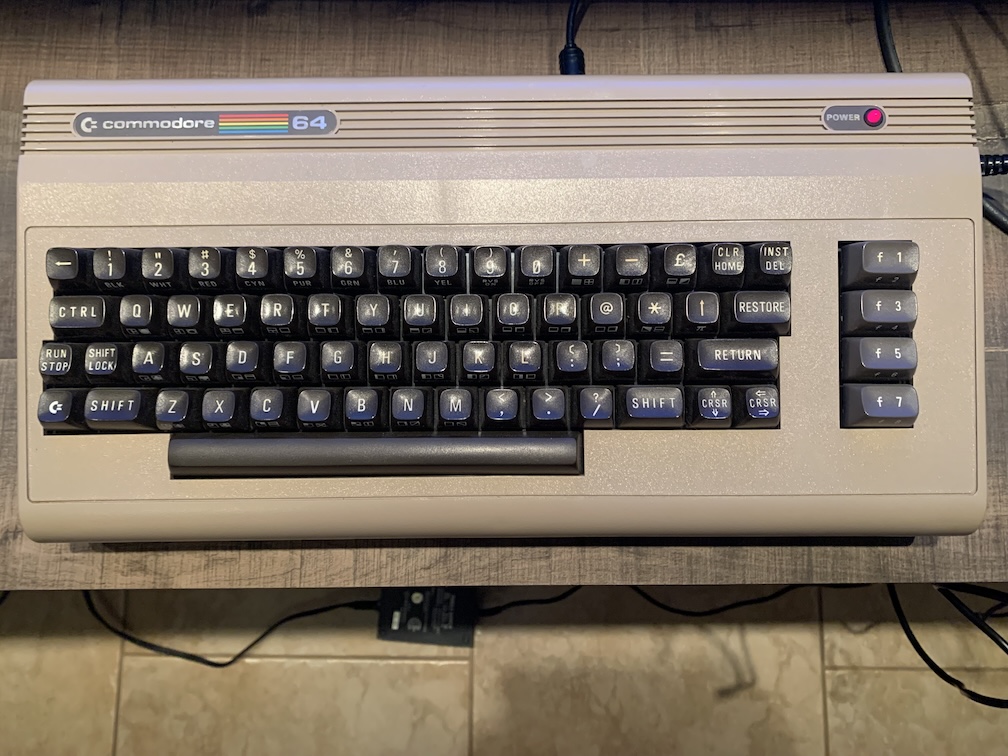posted: March 28, 2024
tl;dr: What I did with my Commodore 64...
The Commodore 64 was flexible and powerful enough, for its time, to support a wide range of applications and use cases. This might be surprising to younger computer users, as you will recall that it only had 64 Kilobytes (KB) of memory. Software was a lot less bloated, and a lot less graphics-intensive, forty years ago. Here’s what I did with my Commodore 64.
Programming: The Commodore 64 came with BASIC built in. It was effectively the operating system and the main user interface, as well as a programming environment. I had already programmed in BASIC on several other computers, including professionally, and I was at university learning new computer languages, so I didn’t need to write a lot of BASIC. But when I needed to accomplish a quick programming task, such as a calculation, I used it. By the way, this almost certainly was the very first BASIC program I ever wrote - this was effectively the “Hello, world!” program for BASIC:
10 PRINT "MY NAME IS CHRIS"
20 GOTO 10
Remote access: This was an incredible life hack for its time. In the early to mid-Eighties, hardly any students showed up on campus with a computer. I only recall one other person in my dorm, a friend of mine, having one (actually, he had a terminal, not a full-fledged stand-alone computer). To do the homework for Computer Science classes, or to experiment with computers, students used to have to go to one of the computer rooms on campus. During busy periods, like the night before an assignment for a popular class was due, the computer rooms would be packed, there would be a sign-up sheet, and your time on the computer would be limited. If you didn’t have your program done at the end of your time slot, you would be out of luck.
Meanwhile, I was sitting back in my dorm room, dialed into the campus computer system over a 300-baud analog modem. This is barely enough bandwidth to print text as fast as it can be read, but it was sufficient for my purposes. My time was unlimited, and I didn’t have to trudge through the snow to get my Computer Science homework done. Over the years and decades, of course, the dorms got wired with Ethernet and Wi-Fi, every student brought a computer, and the campus computer rooms fell into disuse and were often repurposed. I was ahead of the curve.

The computer that propelled me though college, my Commodore 64
Word processing: I made it through freshman year by first writing all my papers in longhand, and then typing them on an electric typewriter that I brought to campus. After that, I substituted the Commodore 64 and my Epson MX-80 dot matrix printer for the typewriter, to produce the final paper for submission. Yes, I still wrote my papers in longhand first, but usually the professors I handed my papers to didn’t believe this. I was suspected of short-cutting the longhand draft process, which was supposed to contribute to rigorous thinking and a better final composition. It actually wasn’t until years later that I became comfortable with using a computer for my first draft. But because the MX-80 had just one built-in font, and my papers were obviously printed by a computer printer, I was under suspicion. I felt my grades in courses requiring papers suffered a bit because of this.
What changed this bias was the introduction of the Apple Macintosh in 1984. You could also attach a dot matrix printer to it, but the Apple printers supported different fonts, as did the Macintosh itself, which allowed some creativity in presentation. More importantly, the Macintosh was the “computer for the rest of us”, i.e. non-computer geeks like me. Creative types could use it, not just programmers. It soon became acceptable, in the Cornell College of Arts and Sciences, to submit a paper that was printed on a Macintosh printer. Begrudgingly, my Epson MX-80 papers were also accepted, finally without bias, in my opinion.
Gaming: This was not a major fraction of my time at college; if it had been, my grades would have suffered or it would have taken more than four years of tuition to get my degree. But I did enjoy doing a little gaming on occasion to blow off some steam and reduce stress. The Commodore 64 allowed me to do some gaming without having to visit a nearby arcade and plug quarters into a Galaga, Defender, or Asteroids machine. So it was a bit of a time and money saver.
I had a few Commodore 64 game cartridges, and used an Atari 2600 controller, which the Commodore 64 accepted, for most of them. The sound on my Commodore 64 was piped into my stereo system, which meant I could play it as loudly as I wanted, thereby attracting the attention of my fellow dorm dwellers. The other games I played came from Commodore 64 computer magazines, which often had game articles with the source code, in BASIC, in the back of the magazine. Yes, I had to carefully type in each game line by line, but once I had successfully done so, I could save the game to disk and load it from disk in the future. This may seem strange to younger computer users, but back then we did what we had to do in order to enjoy computer gaming.
There is no doubt in my mind that my Commodore 64 gave me a headstart in my computer education and career. It wasn’t the only headstart I had, but it did help boost me into the profession that I remain in to this day.